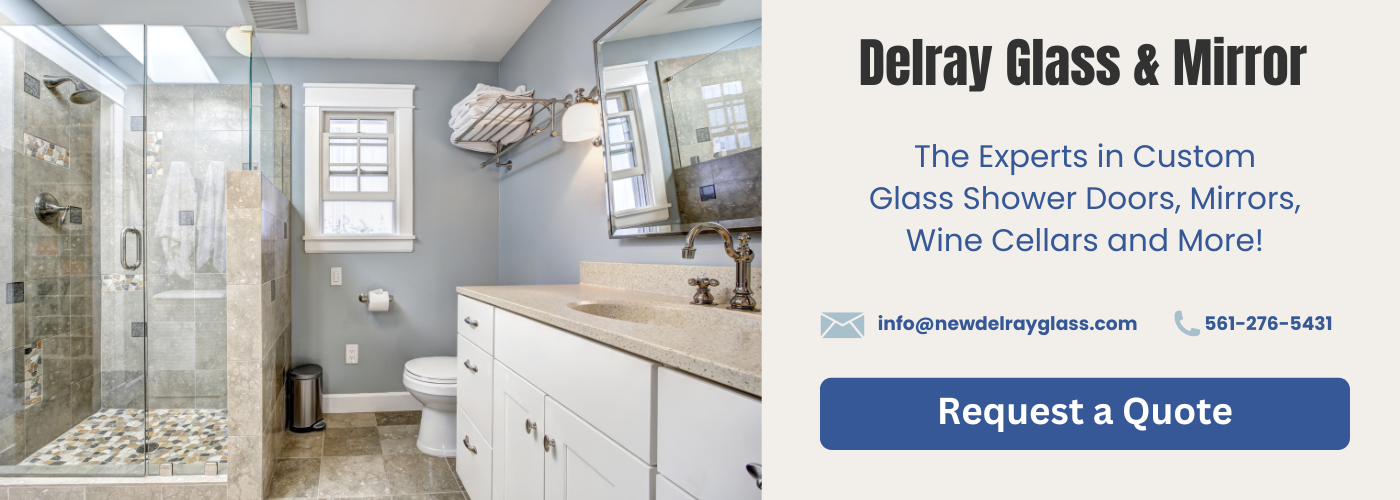**What Measurements Are Necessary to Determine if a Shower Door Is ADA Compliant?**
Creating spaces that are accessible and inclusive is an essential aspect of modern design, especially when it comes to bathrooms. For individuals with disabilities, navigating a bathroom can present significant challenges if it isn’t properly designed to meet accessibility standards. The Americans with Disabilities Act (ADA) provides comprehensive guidelines to ensure that shower doors and other bathroom fixtures are accessible, safe, and functional for everyone. But how can you determine if a shower door is ADA compliant? The answer lies in taking precise measurements and evaluating specific design elements.
From the width of the door opening to the height of the threshold, there are several key factors to consider when assessing ADA compliance for shower doors. These measurements ensure that individuals using mobility aids such as wheelchairs, walkers, or canes can enter and exit the shower with ease. Additionally, compliance involves more than just dimensions; the placement, height, and usability of handles, controls, and other hardware play a crucial role in ensuring accessibility.
This article will explore the critical measurements required for ADA compliance by breaking them into five essential subtopics: **Clear Opening Width Requirements**, **Threshold Height and Accessibility Standards**, **Handle and Hardware Accessibility**, **Shower Door Swing and Maneuvering Clearance**, and **Height and Placement of Controls Near the Shower Door**. By understanding these elements, homeowners, contractors, and designers can create spaces that provide both functionality and dignity for all users. Let’s dive into the details of each of these critical aspects to ensure your shower door meets ADA standards.


Clear Opening Width Requirements
When determining if a shower door is ADA (Americans with Disabilities Act) compliant, one of the most critical measurements to assess is the clear opening width. This measurement ensures that individuals, including those who use wheelchairs or mobility devices, can comfortably access the shower space. According to ADA standards, the clear opening width of a shower door must be at least 32 inches wide when the door is fully open. This dimension is measured from the edge of the door to the opposite edge of the opening. The requirement aims to provide adequate space for users to navigate safely and independently.
Clear opening width requirements are especially important in ensuring that individuals with disabilities do not face unnecessary barriers when using bathroom facilities. A narrow doorway might limit access, forcing individuals to rely on assistance, which undermines the principles of independence and inclusivity central to the ADA guidelines. For roll-in showers, often found in public or shared spaces, this measurement plays a key role in accommodating wheelchairs or other assistive devices.
In addition to meeting the minimum width requirements, designers and builders must also consider the placement of the shower door. For example, the door should not obstruct nearby fixtures, such as sinks or toilets, as this could reduce the overall effective clearance. Proper planning ensures that the bathroom layout as a whole is functional and compliant with accessibility standards. By adhering to these guidelines, architects and contractors can create spaces that cater to the needs of all users, fostering a more inclusive environment.
Threshold Height and Accessibility Standards
When assessing whether a shower door meets ADA (Americans with Disabilities Act) compliance, the threshold height and accessibility standards are critical considerations. The threshold is the raised or lowered edge that separates the shower area from the rest of the bathroom floor. To ensure accessibility for individuals with disabilities, ADA guidelines specify that the threshold height should be as low as possible to allow seamless entry and exit, particularly for those using wheelchairs or mobility aids.
According to the ADA Standards for Accessible Design, the maximum height for a shower threshold is typically ½ inch (13 mm) for a beveled edge or ¼ inch (6.4 mm) if the edge is not beveled. These specifications aim to prevent tripping hazards and create a smooth transition for users. A beveled edge is particularly important as it provides a gradual slope that is easier to navigate compared to a sharp or abrupt step. Additionally, curbless or roll-in shower designs are highly encouraged, as they completely eliminate the need for a raised threshold, offering the highest level of accessibility.
Beyond the height, the material and finish of the threshold should also be considered. Non-slip surfaces are essential to reduce the risk of accidents caused by wet or slippery conditions. Properly designed thresholds not only comply with ADA standards but also enhance safety and usability for individuals of all abilities. By adhering to these guidelines, designers and contractors can create inclusive bathroom spaces that accommodate diverse needs without compromising functionality or style.
Handle and Hardware Accessibility
When determining if a shower door is ADA (Americans with Disabilities Act) compliant, the accessibility of the handle and hardware plays a crucial role. This is because individuals with disabilities may have limited hand strength, dexterity, or mobility that could make operating traditional handles or hardware difficult. Ensuring that these components meet ADA guidelines facilitates ease of use and promotes independence for individuals with a wide range of physical abilities.
ADA-compliant shower door handles should be easy to grasp and operate without requiring tight pinching, twisting, or significant force. Lever-style handles, push mechanisms, or D-shaped handles are often preferred designs, as they accommodate users with limited grip strength or arthritis. The ADA specifies that the force required to operate hardware should not exceed 5 pounds, ensuring ease of use for all individuals, including those with reduced upper body strength or mobility challenges.
Additionally, the placement of the handle is critical. It should be installed within a comfortable reach range for individuals using a wheelchair or other mobility devices. The ADA typically recommends that handles and operating mechanisms be no higher than 48 inches from the finished floor. This ensures that all users, regardless of height or mobility limitations, can easily access and operate the shower door. By adhering to these guidelines for handle and hardware accessibility, shower doors can meet the standards of inclusivity and functionality required for ADA compliance.
Shower Door Swing and Maneuvering Clearance
When evaluating whether a shower door is ADA compliant, the swing of the door and the maneuvering clearance required around it are crucial considerations. These measurements ensure that individuals with disabilities, particularly those who use mobility aids such as wheelchairs or walkers, can access and use the shower area safely and independently.
The American with Disabilities Act (ADA) specifies that shower doors must provide enough room for a wheelchair user to approach, maneuver, and enter the shower space without obstruction. This includes accounting for the direction in which the shower door swings—whether it opens inward, outward, or is a sliding door. Outward-swinging doors are often preferred for ADA compliance, as they eliminate the risk of someone becoming trapped inside the shower in case of an emergency. Additionally, sliding doors can be an alternative if designed to provide sufficient clear opening space.
Maneuvering clearance refers to the space around the door that allows for easy operation and navigation. For instance, if the shower door is hinged, there should be adequate space for a wheelchair to turn or back up while opening or closing the door. The ADA typically requires at least a 30-inch by 48-inch clear floor space adjacent to the door for this purpose. These dimensions ensure that individuals have enough room to approach the door head-on or at an angle, depending on their needs.
Designing a shower door with proper swing and maneuvering clearance not only adheres to ADA guidelines but also enhances safety and usability for everyone. By carefully measuring and planning these aspects, manufacturers and installers can create spaces that promote independence and dignity for people of all abilities.
### Height and Placement of Controls Near the Shower Door
The height and placement of controls near the shower door play a crucial role in determining whether the shower setup is ADA (Americans with Disabilities Act) compliant. This aspect ensures that individuals with mobility challenges, including those using wheelchairs or other assistive devices, can easily access and operate essential controls, such as water temperature adjustments, showerheads, or other features, without unnecessary strain or difficulty.
To meet ADA standards, controls such as faucets, showerhead levers, or diverters must typically be located within a specific range of heights, usually between 15 inches and 48 inches from the floor. This range ensures accessibility for both seated and standing users. Additionally, controls should be easy to operate with minimal force, requiring no tight grasping, pinching, or twisting of the wrist. This is particularly important for individuals with limited dexterity or strength.
Another critical consideration is the proximity of these controls to the shower door. They should be placed in a way that allows users to operate them without needing to reach across the door or maneuver awkwardly. For example, controls that are too far away or situated in inconvenient locations might pose safety risks or hinder independence. The placement should also account for the swing of the door and any potential obstructions to ensure the user has clear and safe access.
Lastly, thoughtful design can go beyond mere compliance to enhance user experience. Features such as labeled or tactile control indicators, contrasting colors for better visibility, or even electronic touch controls can make shower spaces more inclusive and user-friendly. By paying close attention to the height and placement of controls, designers and builders can ensure the shower environment is safe, accessible, and comfortable for all users, in full alignment with ADA guidelines.
